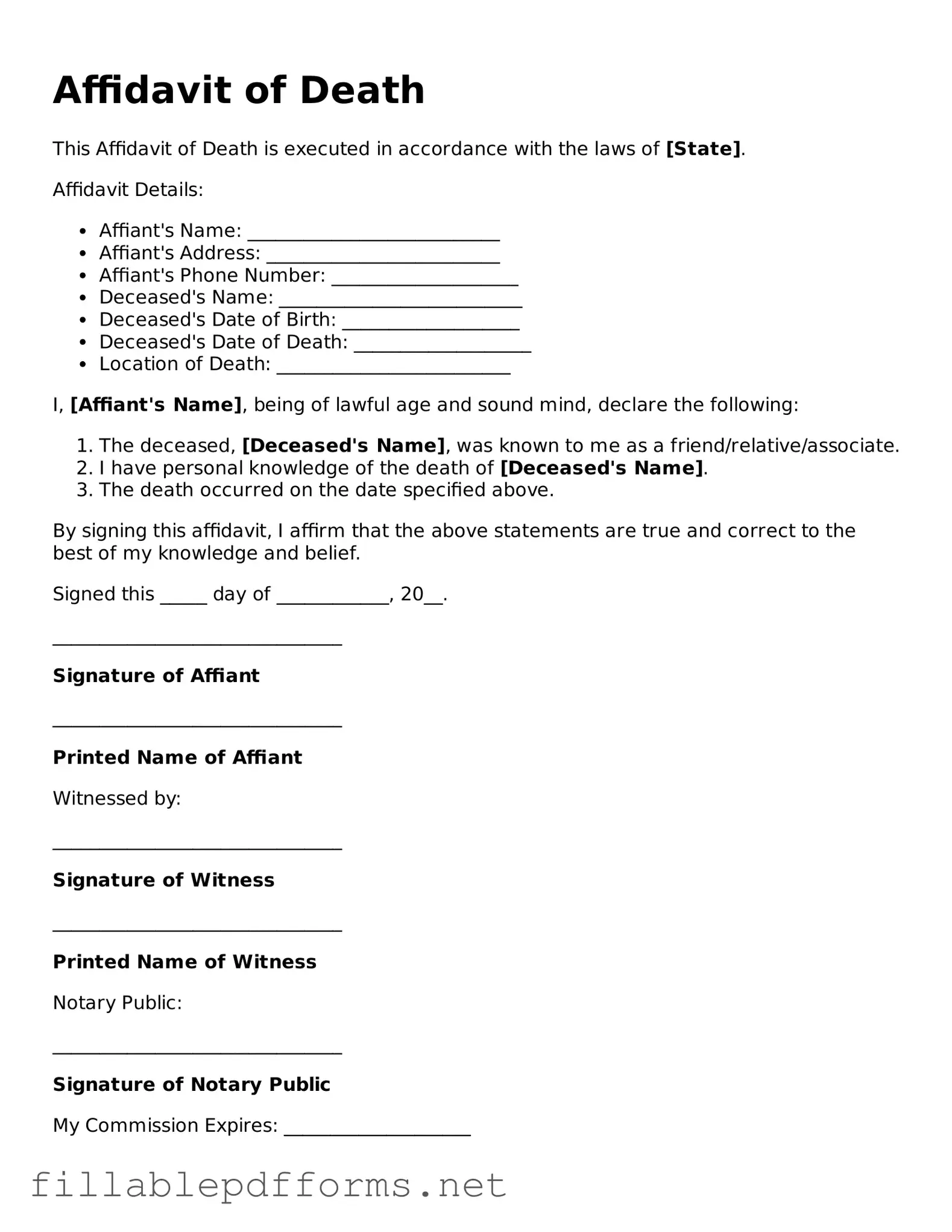Blank Affidavit of Death Template
The Affidavit of Death form is a legal document used to officially declare that an individual has passed away. This form serves as a crucial tool for settling estates, transferring assets, and addressing various legal matters that arise after someone's death. Understanding how to properly complete and file this form can help ensure a smoother transition for loved ones during a difficult time.
Launch Editor Here
